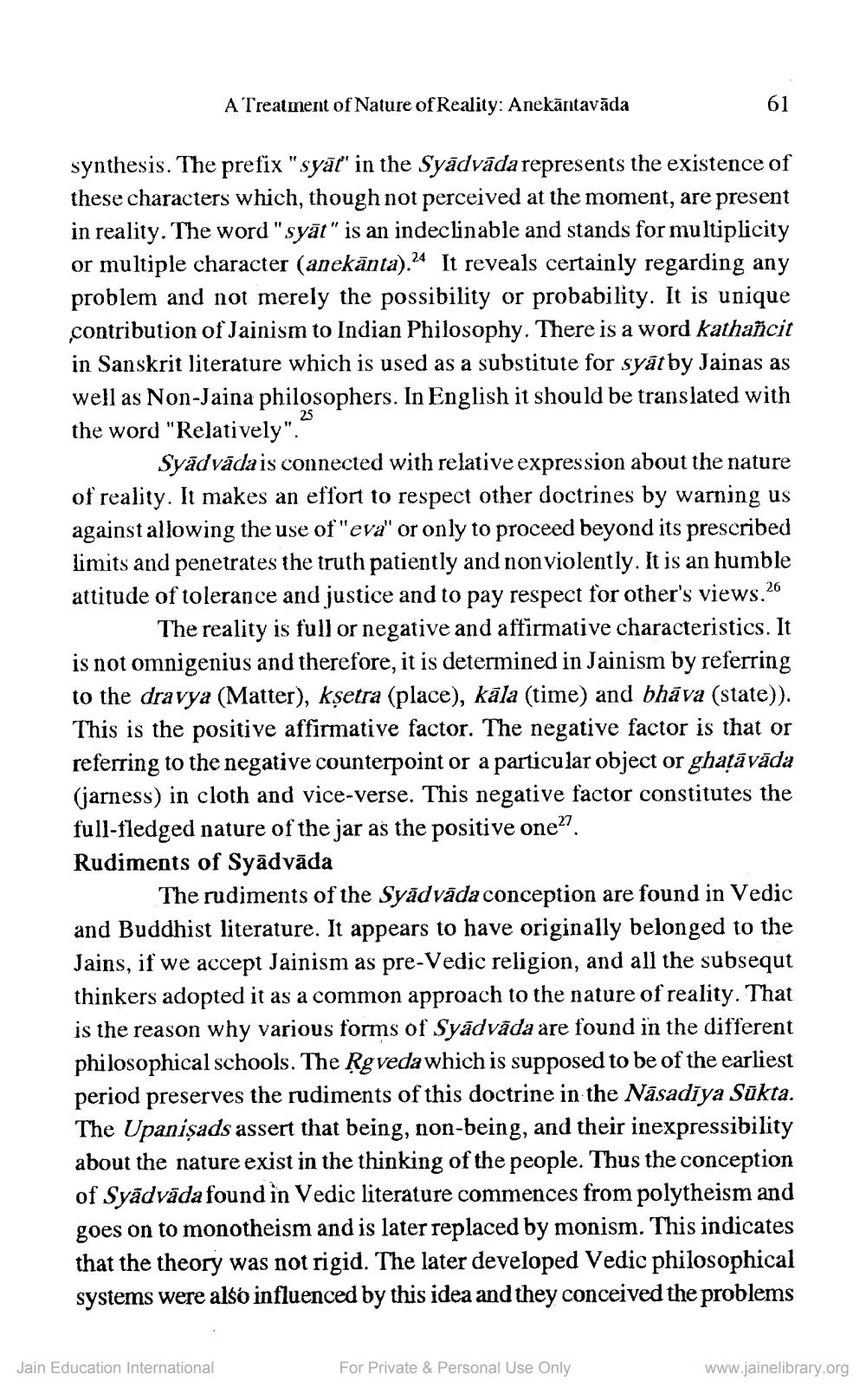________________
A Treatment of Nature of Reality: Anekāntavāda
61
VISUOIICallVallIIIII
Jat
synthesis. The prefix "syāt" in the Syādvāda represents the existence of these characters which, though not perceived at the moment, are present in reality. The word "syāt" is an indeclinable and stands for multiplicity or multiple character (anekānta).24 It reveals certainly regarding any problem and not merely the possibility or probability. It is unique contribution of Jainism to Indian Philosophy. There is a word kathañcit in Sanskrit literature which is used as a substitute for syāt by Jainas as well as Non-Jaina philosophers. In English it should be translated with the word "Relatively".
Syādvāda is connected with relative expression about the nature of reality. It makes an effort to respect other doctrines by warning us against allowing the use of "eva" or only to proceed beyond its prescribed limits and penetrates the truth patiently and nonviolently. It is an humble attitude of tolerance and justice and to pay respect for other's views.26 Ther
ive and affirmative characteristics. It is not omnigenius and therefore, it is determined in Jainism by referring to the dravya (Matter), kşetra (place), kāla (time) and bhāva (state)). This is the positive affirmative factor. The negative factor is that or referring to the negative counterpoint or a particular object or ghațāvāda (jarness) in cloth and vice-verse. This negative factor constitutes the full-fledged nature of the jar as the positive one?? Rudiments of Syādyāda
The rudiments of the Syādvāda conception are found in Vedic and Buddhist literature. It appears to have originally belonged to the Jains, if we accept Jainism as pre-Vedic religion, and all the subsequt thinkers adopted it as a common approach to the nature of reality. That is the reason why various forms of Syādvāda are found in the different philosophical schools. The Rgveda which is supposed to be of the earliest period preserves the rudiments of this doctrine in the Nāsadiya Sūkta. The Upanişads assert that being, non-being, and their inexpressibility about the nature exist in the thinking of the people. Thus the conception of Syädväda found in Vedic literature commences from polytheism and goes on to monotheism and is later replaced by monism. This indicates that the theory was not rigid. The later developed Vedic philosophical systems were also influenced by this idea and they conceived the problems
Jain Education International
For Private & Personal Use Only
www.jainelibrary.org




